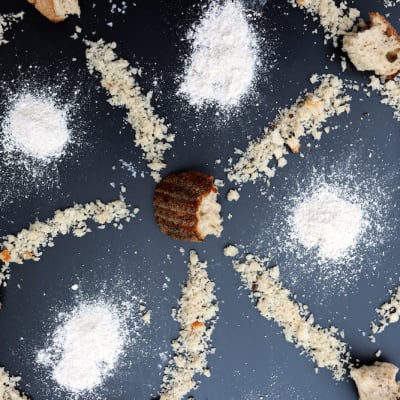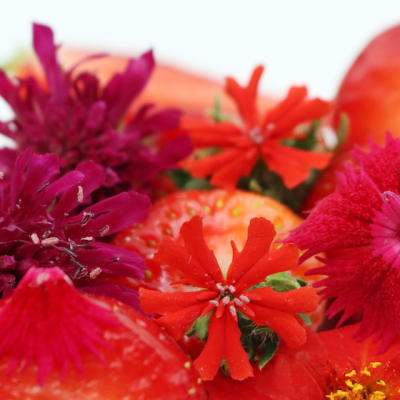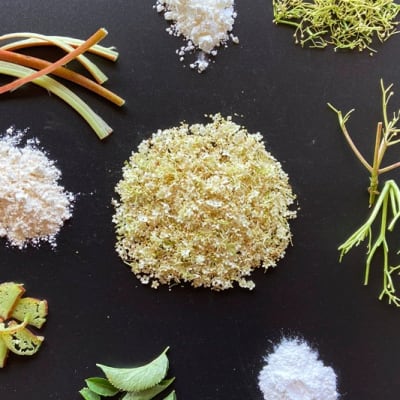Our gardens are flooded with colour in this fine weather; but they’re more than just a pretty face. Flowers have been used in cooking for centuries, from Chinese chefs experimenting with chives in 3,000BC to the Romans adding roses, violet and lavender to their dishes.
Down in the Kitchen Garden, edible flower beds are brimming with California poppies, marigolds and salvia, while lavender lines the old greenhouse. We’re adding violas and nasturtium leaves to our salad bags and turning sweet cicely into a garden marinade with fresh mint and lemon – smother onto summer vegetables or halloumi before adding to the grill.
It’s surprisingly easy for you to grow edible flower varieties at home. Many are quick to bloom and produce large amounts of flowers; some are even self-seeding, doing the work for you. You can buy plants now and pot out for a pick-as-you-go windowsill or use as companion plants in your vegetable beds. Calendula and nasturtiums will act as delectable ground cover and help keep aphids at bay.
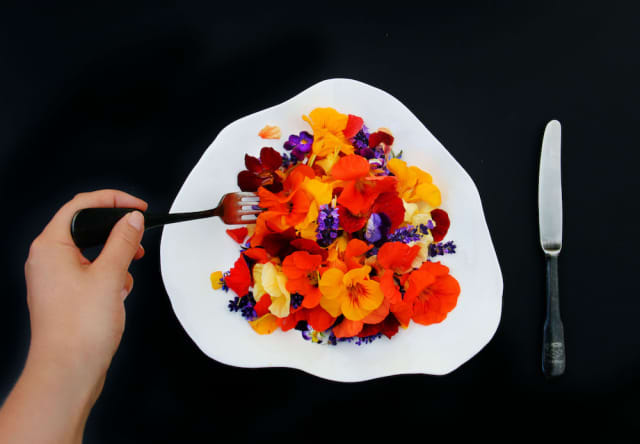
Sarah tends our hotel kitchen gardens, here she shares her pick of the tastiest edible blooms to use in salads, garnishes, baking and drinks:
California poppies – With brilliant orange petals and a seaweed-like taste; leaves, stems and flowers can all be brewed to make a soothing herbal tea.
Chive flowers – A good companion plant to tomatoes, chive flowers can be tossed in pasta, hollandaise and scrambled eggs, adding delightful crunch and onion flavour.
Calendula (aka ‘the pot marigold’) – A long time staple in British cottage gardens, the yellow and orange flowers add a spiced saffron flavour and colour to stews, broths and salads. Both flowers and leaves can be dried and stored for later use.
Salvia – With a long flowering season, aromatic salvias attract helpful pollinators and require little care and attention, making them a helpful addition to your borders.
Dianthus – A small bloom with a big fragrance and pleasantly sweet and sour taste, try them with seafood, stir fries or fruit salads.
Nasturtium – Versatile and fast growing, nasturtiums live happily in borders, containers and hanging baskets, and add a peppery kick to salads.
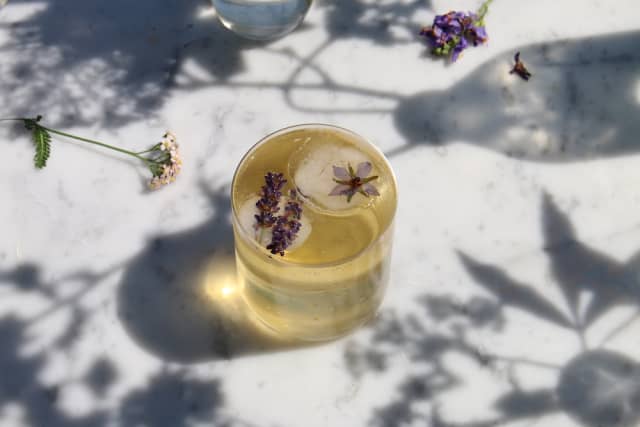
The Parabola Cocktail
To make edible flower ice:
Heads of edible flowers: cornflowers, borage and nasturtiums all work well.
Still spring water
Ice cube trays or moulds
Using spring water for extra clarity, fill your ice cube trays and moulds.
Gently place the flower heads on top, facing down to protect its natural shape.
Freeze overnight, then use to add a flourish to your G&T or in our Parabola cocktail, made with our special Apple Gin.
To make the cocktail:
50ml The Newt Apple Gin
25ml St Germain elderflower liqueur
5ml Elderflower cordial
75ml The Newt Medium Cyder
Fill a highball glass generously with ice cubes.
Pour over the gin, liqueur and cordial.
Top up with The Newt Medium Cyder.
Garnish with edible flower ice, and a sprig of garden lavender.
APPLE GIN
Our Apple Gin is distilled in small batches using our own apple juice and botanicals from our Parabola garden. Available now from the Mobile Newt.
